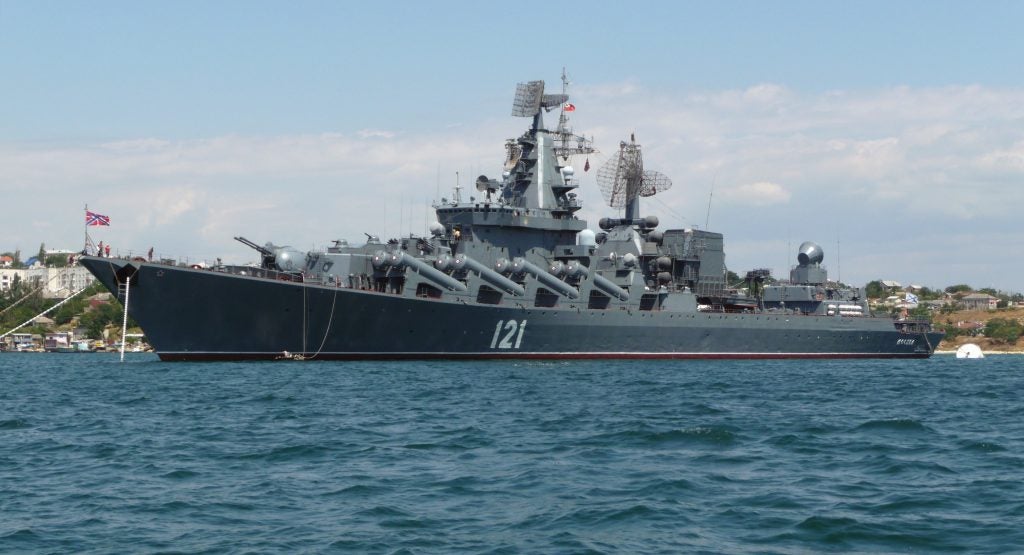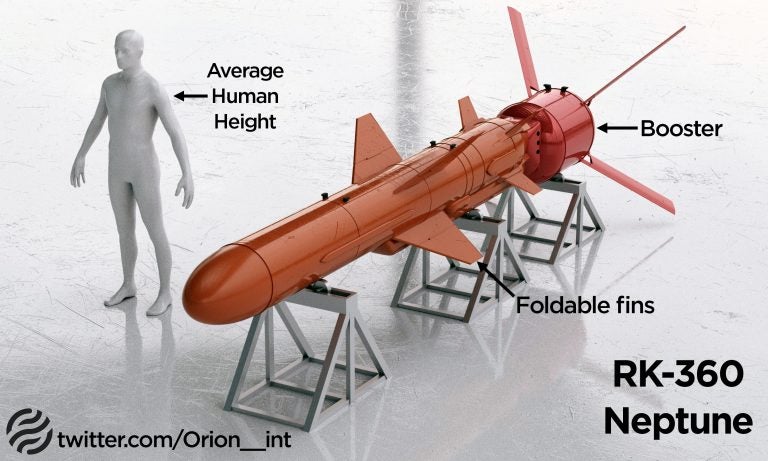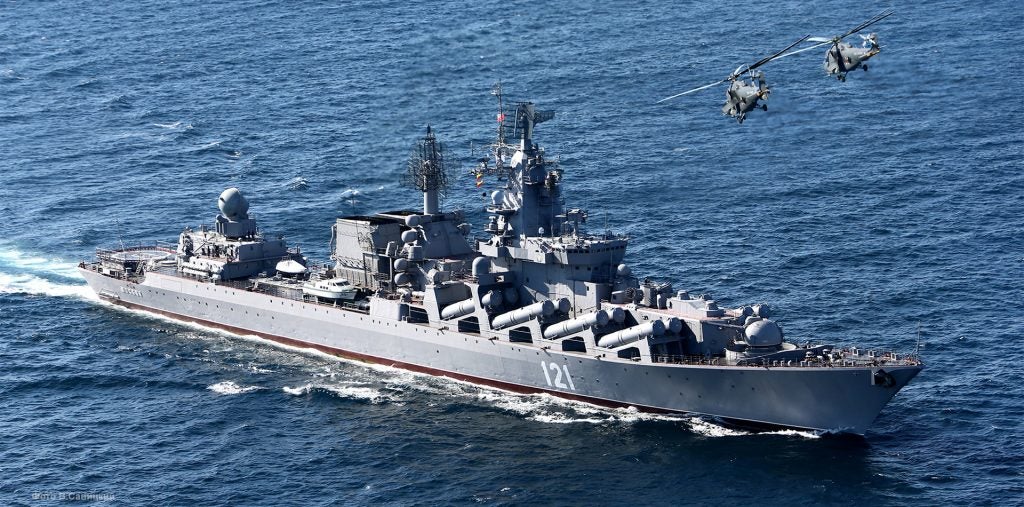Russian Cruiser Moskva Confirmed Sunk
Moskva, the flagship of Russia’s Black Sea Fleet has been confirmed to have sunk. The Russian Ministry of Defense confirmed yesterday that the Slava class cruiser sank while being towed to port. Stormy weather is said to have caused the damaged ship to sink. She is the largest ship to sink during wartime operations since the Falklands War.
Ukraine claim that the Moskva was struck by a pair of Neptune anti-ship missiles. Ukrainian reports claimed that the vessel was struck by the RK-360 Neptune missiles and caused a caught fire. The Russian Ministry of Defense suggested the fire had been caused by an accident and reported at the time that the ship remained afloat. An urgent rescue operation was undertaken and multiple support vessels came to aid the stricken cruiser. This, however, appears to have been to no avail. The ship subsequently sank as it was towed back to port, it is unclear how many of her crew were evacuated. The sinking of Moskva follows the sinking of an Alligator class landing ship at Berdyansk, following an apparent Ukrainian strike.

The lead ship of her class, Moskva, was commissioned back in 1982 by the Soviet Union under the name Slava. Initially decommissioned at the end of the Cold War she was reactivated in the late 1990s and recommissioned as the Moskva. Equipped with 16 P-1000 Vulcan anti-ship missiles, 64 S-300F long-range surface-to-air anti-air missiles, and 40 OSA-M short-range SAM it could, in theory, single-handedly control the Ukrainian sky around the Black Sea. The Moskva had a crew of over 500, displaced 12,490 tons and was over 600 feet long (186m).

By all standards, Moskva was an outdated ship that had not undergone any significant modernization since its recommission in 2000. Despite its significant anti-air armament the ship’s tracking systems and radars were dated, with a planned upgrade 2016 cancelled due to funding shortfalls. If indeed the vessel was struck by Ukrainian anti-ship missiles the stormy weather would have made detecting them with the MR-800 Voshkod and MR-700 Fregat radars even more difficult.
It has been speculated that one of the missiles may have struck an S-300F silo or anti-ship missile launcher causing a fire and detonation of tons of rocket fuel and ordnance. This somewhat coincides with reports given by the Russian media on the cause of the ship’s sinking. While a Ukrainian attack seems probable the Russian government’s suggestion of an accident aboard the vessel not inconceivable either given the Russian Navy’s safety record.
Regardless of how the fire aboard Moskva started her fate was confirmed by the Russian-state media on the evening of 14 April, with the Russian TASS press agency confirming that after the detonation of ammunition aboard the ship, the cruiser sank while under tow. Not only is the loss a national embarrassment for Russia it also represents a major blow to Russian operations in the Black Sea. As Russia’s focus turns south the loss of a key capital ship creates a gap in their air defense and shore bombardment capabilities.
Cover photo by the Defense Ministry of Russia under CC BY 4.0.

